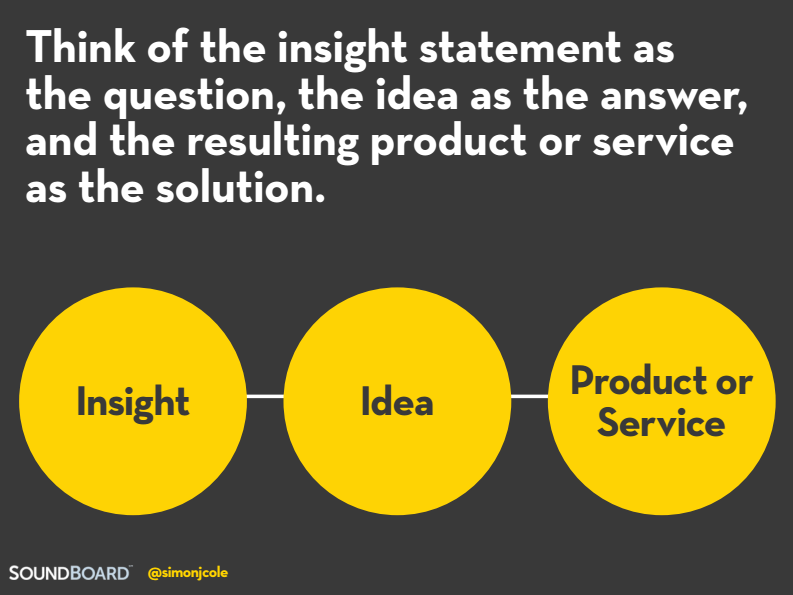 Though “Change or Die” is a common axiom in business, “Innovate or die” is a more accurate one. An estimated 40% of the Fortune 500 companies on the SP500 are predicted to no longer exist in ten years. Big, slow-moving companies are at risk by the ease at which people and companies can become industry disruptors.
Though “Change or Die” is a common axiom in business, “Innovate or die” is a more accurate one. An estimated 40% of the Fortune 500 companies on the SP500 are predicted to no longer exist in ten years. Big, slow-moving companies are at risk by the ease at which people and companies can become industry disruptors.
Defunct companies like Blockbuster, Polaroid, Compaq, Hummer, and others all failed to innovate quickly enough to meet changing consumer needs. Had those defunct brands had a process in place to find, define, and implement innovation, they may have had a shot at survival.
With incredibly powerful technologies freely available to entrepreneurs everywhere, companies of all sizes must continuously and effectively innovate if they hope to thrive. The process of innovation begins with gaining insights into customer needs. But how should we define insights and and develop them into actual innovation?
Caution: Here’s What Insights Are NOT
People tend to use the word “insight” in all manner of jargony, vague ways. So let’s explore what insight really is. To do that, it’s helpful to first review what insight is not.
Insight is NOT data. Insight necessary to innovate comes from analysis. We are all swimming in data, but data does not do your thinking for you. Insights require you to think holistically and analyze intensely.
Insight is NOT an observation of customers. Observations lack the “why” behind customer behavior, as observation alone does not speak to motivation. Actual insight comes from converting astute observations into something more meaningful and actionable, to get to the elusive and all-important “why.”
Insight is NOT a stated customer need or wish. Knowing a customer’s needs is not in of itself an insight. Again, this information still does not shed any any light onto the customer’s motivation, or why the customer believes a particular service or experience is needed.
Though articulated needs are ideal for defining product features and benefits, they do not lead to the sorts of insights that have the gravity to topple existing product categories and create new ones.
So What IS An Insight?
- An unrecognized fundamental human truth.
- A new way of viewing the world that causes us to reexamine the status quo.
- A penetrating observation about human behavior that results in seeing consumers from a fresh perspective.
- A discovery about the underlying motivations that drive people’s actions.
Turning Knowledge Into Insight
You may (and should) have extensive knowledge about your customers, but how do you turn that research data into insight?

Gaining real insight—the sort that will inspire ideas and people to develop new desirable products and services—boils down to five key principles: Context, Dilemma, Why, Motivation, and Ideal. We call this pathway to insight the “Five Principle Approach.”
1) Context
The goal in this first step is to set the context by explaining how people behave in a given situation, including what they think and feel. Most importantly, explain what they are doing and what they are trying to achieve.
How are people using a product or service? How are they behaving on a site intended to sell products relevant to them? It is important to clearly define the context of your research before moving to the next principle.

2) Dilemma
In this stage, the goal is to communicate the dilemma that your customers are facing. Look for barriers that stop consumers from achieving what they want.
Where are people having trouble buying from you? What issues are they having using your physical product? These dilemmas can occur around values and behaviors, or needs and desires. Finding and identifying these dilemmas is a key component in the path to discovering insight.

3) Why
Now it’s time to articulate the “Why?” of a particular consumer behavior. Synthesize what’s been observed, and look closely at what is driving particular behaviors. Why is a consumer behaving in this way?.Understanding behavior is the only way to develop a product or service that augments or changes it.
Why are customers having trouble performing a task— is it a navigational issue? A user experience issue? A misunderstanding of how the product is supposed to be used? A branding and expectations issue? Before moving forward on the path to insight, make sure you gain a clear understanding of the “why.”

4) Motivation
At this stage, your goal is to capture the motivation of your customers. End-users of a product or service are motivated to change by the unfulfilled needs that remove a given tension. Find the frustration and you will locate the core motivating factors.
What’s driving customers to perform a task in a way that’s causing a frustration? Is it unclear user experience? A missed opportunity? At this point, you should be able to define all the way through the problem and start getting a semblance of the ideal.

5) Ideal
Now envision the ideal. With stages 1-4 completed, clearly articulate the consumer’s desired end-state or situation. Keep in mind, the ideal comes before a solution. In this stage, just focus on the ideal situation for a consumer if the previously defined problem didn’t exist.
Now distill this ideal by turning what you’ve learned into an “I wish there was” statement. Though these statements very much depend on your own research, here are some examples.
I wish there was:
…an easier way to purchase a group of these products.
…a less confusing interface for this service.
…a better way to.understand the value of this service.

Insight Statement
Congratulations, you now have the kernel of insight! Except insight alone won’t change the world. Now your role shifts to packaging your insight into an insight statement, something that drives your team to action!
Language Matters
Your great insight—the one that could reframe a category and give you an insurmountable competitive advantage—can wither and die if it’s not crafted as an inspirational rallying cry that drives action.
Whether you’re a small business owner, involved in R&D, or even running your own innovation team, you’ll need to market your insight internally. If you’re not properly communicating internally to your team, you risk losing all the momentum gained coming out of the field and working through the Five Principle Approach.
An Insight Statement In 3 Sentences
Think of insight definition as a journey that summarizes the consumer’s situation, frustrations and future desires. Structure your insight statement in three sentences that command action. We’ll use the example of the emergence of the digital camera to help guide you through this insight statement process.
1. Describe the current situation and the incumbent consumer behavior.
“Having pictures around that instantly remind me of special moments and people makes me feel good.”
2. Describe the dilemma the consumer has and clearly articulate why this is a frustration in their life.
“But I find that pictures from my digital camera often stay hidden on my devices because I never have time to print them.”
3. Describe the consumer’s desired end-state, their ideal situation.
“I wish there was a way to enjoy them everyday without having to actively play them on my TV or computer.”

These three sentences allow for an insight statement. The insight statement is designed to be actionable and understandable to your entire team, free of jargon and easy to conceptually grab hold of and understand.
“Having pictures around that instantly remind me of special moments and people makes me feel good. But I find that pictures from my digital camera often stay hidden on my devices because I never have time to print them. I wish there was a way to enjoy them everyday without having to actively play them on my TV or computer.”
Key Insight Criteria
To motivate action, an insight statement needs to meet some key criteria:
- Connects with consumers on an emotional level
- Re-examines existing conventions and challenges the status quo
- Solves a real problem that results in the creation of new customers
- Inspires action with a clear target
- States what do next and how to deliver value to your customers
If you follow these above guidelines, then you’ll have the groundwork of a great insight statement. However, it’s still a bit premature to pitch your insight statement to your team. To drive actual innovation, you need to make your insight statement actionable.
Make Your Insight Statement Actionable

Remember, insight alone won’t generate new customers. You need an actionable insight statement that your team can strive towards solving!
This can be as simple as rephrasing your earlier insight statement into a question that adds a how/why/me element:
“How might we enjoy our memories every day without having to take the time to actively play them on devices?”
That statement is actionable, and your team can run with it and ideate to come up with a solution.
The Big Question

Insights are only the beginning, not the end, of a far more significant process.
Think of the insight statement as the question, the idea as the answer, and the resulting product or service as the solution. The insight statement is the big, defined question that propels the entire innovation process.
If you think in these terms and follow the overall 5 Principle approach outlined here, you’ll be well on your way to a healthy innovation channel.
As markets continue to rapidly change, companies of all sizes need to be on top of their innovation channel and invest continually.
Insights Are Difficult But Worth It
Insights are terribly difficult to find but critical to unlocking organic growth. They reduce irrelevance and focus on what is meaningful while setting the foundation for successful product and service development.
Key Takeaways
- REDUCE THE DATA and analyze it better to…
- INCREASE YOUR INSIGHT which will make you…
- BE A SMARTER BUSINESS that is continuously innovating and thriving!

